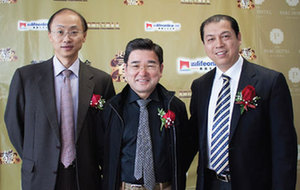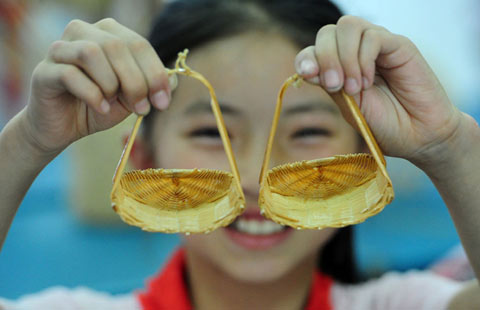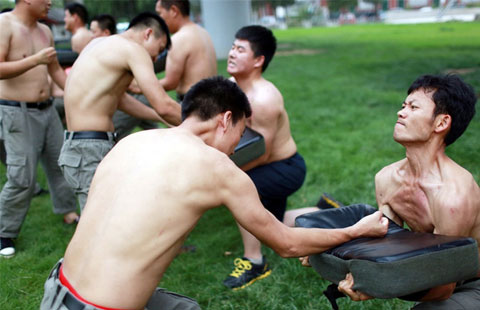Ancient saddles preserved at horse museum
Updated: 2014-06-17 07:05
By Alexis Hooi (China Daily)
|
||||||||
 |
|
Ma Dongsheng (far right) with his horse riding buddies at his stables on the outskirts of Duolun. Photo by Alexis Hooi / For China Daily |
 |
| Photographer explores roots through a lens |
 |
| All ends well for the man who finds the wells |
But it is his private museum of antique and ethnic saddlery that takes pride of place. Touted as the only one of its kind anywhere in the world, his collection boasts more than 3,000 pieces of equestrian equipment from dynasties such as the Jin (1115-1234).
The exhibits include more than a hundred saddles - ranging from traditional Mongolian seats ornamented in gilt gold, velvet and cloisonne fit for the Khan's immediate family, to Japanese military getups with gun holsters from the War of Resistance against Japanese Aggression (1937-1945).
Like a delighted boy introducing some of his most beloved toys, Ma points to stirrups from the Liao (916-1125) and Qing (1644-1911) dynasties, such as a swivelling Khitan piece of bronze-bamboo link design and a Manchu one with dragon-loop motif. All are immaculately preserved and presented behind glass showcases.
"I inherited and collected these through the decades. Some of them are priceless," Ma says.
His treasure trove is housed in a Qing Dynasty compound, guarded by Tibetan mastiffs.
Visitors are welcome and true to his local nickname as the baatar (Mongolian for hero) of the grasslands, Ma is generous enough to allow his collection to be viewed free of charge.
National equestrian associations and media have covered the official opening of his museum but Ma says his hometown's equestrian attractions still need all the support they can get.
"This area has historically been the meeting point between the Han and Mongolian peoples. A lot of it is rich in equestrian tradition, practice and customs that should be preserved before they disappear," he says.
"Take the master craftsman of the Mongolian saddles here. He's already in his 70s. And he has no apprentice, no successor."

 Council of Fashion Designers of America Awards
Council of Fashion Designers of America Awards
 Fan Bingbing, first Chinese actress in Barbie Hall of Fame
Fan Bingbing, first Chinese actress in Barbie Hall of Fame
 Awarding ceremony of 2014 hito Pop Music held in Taipei
Awarding ceremony of 2014 hito Pop Music held in Taipei
 Zhao Liying's photo shoot for Children's Day
Zhao Liying's photo shoot for Children's Day
 'Taken 2' grabs movie box office crown
'Taken 2' grabs movie box office crown
 Rihanna's 'Diamonds' tops UK pop chart
Rihanna's 'Diamonds' tops UK pop chart
 Fans get look at vintage Rolling Stones
Fans get look at vintage Rolling Stones
 Celebrities attend Power of Women event
Celebrities attend Power of Women event
Most Viewed
Editor's Picks

|

|

|

|

|

|
Today's Top News
For third straight month, China cuts US debt holdings
Immigrant policy to adopt skill wish list
Hirshhorn Museum selects Melissa Chiu to be new director
China lowers US debt for third straight month
China's Alibaba submits updated prospectus
Turmoil in Iraq 'certain to affect China oil prices'
US Navy ship with 550 Marines entering Gulf
US should 'attune itself to China's rise'
US Weekly

|

|







